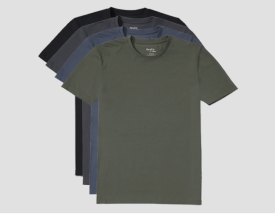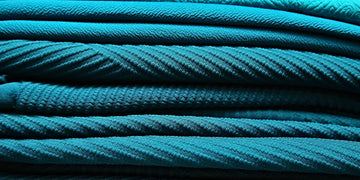Sweating is human. It’s your body’s built-in AC, kicking in whenever the heat, a workout, or a stressful meeting gets the better of you. But the side effects such as damp patches, clingy fabric, and sweat stains that ruin a crisp shirt are a different story. That’s where the right clothing makes all the difference.
An anti-sweatshirt isn’t just another layer. It’s a game plan. Choosing smart fabrics means the gap between feeling drenched and walking confidently through a hot day. With so much talk about “sweat-resistant,” “moisture-wicking,” and “quick-dry” gear, it’s hard to know what really works. This guide breaks down the science behind sweat and fabrics so you know exactly what belongs in your closet, whether for work, the gym, or a casual summer afternoon.
The Science Behind Moisture Control Clothing
Three fabric properties determine whether your shirt saves you or betrays you:
Breathability: The more airflow, the faster sweat evaporates, keeping your skin cooler and fresher throughout the day. Tight, dense weaves trap heat, restrict circulation, and leave you sticky and uncomfortable in warm conditions.
Absorption: Cotton and wool soak up sweat quickly and hold it close to your body. Polyester and nylon resist water and push it outward, helping garments stay lighter, drier, and more comfortable for longer periods of wear.
Wicking and drying: Fabrics designed for moisture movement pull sweat outward, spreading it across the surface. This helps it vanish into thin air, reduces clingy dampness, and prevents embarrassing sweat stains from showing through your favorite shirts.
The right balance of these traits is what makes a sweat proof shirt worth wearing.
Natural Fibers: Tried-and-True Breathability
Natural fabrics have always been staples in clothes for heavy sweating because of their softness and airflow. Each has its perks and pitfalls. They’re often more breathable than synthetics, making them comfortable in hot, humid environments. Many natural fibers also absorb moisture efficiently, which helps prevent sticky discomfort against the skin. On the downside, they can be slower to dry, wrinkle more easily, and sometimes lack the durability of modern blends. Still, for those who value comfort and breathability, natural fibers remain a strong foundation for anti sweat shirts and everyday wear.
Merino Wool: Not Just for Winter
Merino regulates temperature year-round, pulling moisture before you feel wet and fighting odor naturally. Studies show it holds less odor than cotton or polyester, making it a quiet MVP in performance clothing. Its fibers are soft against the skin, lightweight, and breathable, which makes it versatile for both workdays and outdoor adventures. Downsides? Pricey and delicate, requiring careful washing and handling to last.
Linen: The Summer Undershirt Upgrade
Loose, airy, and fast-drying, linen is the classic hot-weather fabric that thrives in humid conditions. Its open weave allows unmatched airflow, helping skin stay cool even on sweltering days. Linen can absorb moisture without feeling heavy, making it ideal for casual outings and vacation wardrobes. It wrinkles easily, which adds a relaxed vibe but can feel too casual for professional settings. Still, for laid-back summer days, it’s unbeatable.
Cotton: Comfortable but Complicated
Cotton feels light and breathable at first, making it one of the most common choices for everyday clothing. It absorbs sweat quickly, which can be helpful in dry climates, but the fabric dries slowly and holds moisture. Once damp, cotton clings to the skin, shows stains, and can leave you feeling weighed down or chilled. Great for lounging, risky for high-sweat days or environments where appearance matters.
Synthetic Fabrics: The Workout Warriors
If you’ve ever worn gym gear that actually kept you dry mid-sprint, thank synthetics.
● Polyester: Durable, wrinkle-resistant, and excellent at wicking moisture.
● Nylon: Lightweight and strong but less breathable outside activewear.
● Spandex: Adds stretch, comfort, and movement freedom when blended.
Their Achilles heel? Odor. Sweat and body oils stick, which means your favorite gym top may start to smell even after washing.
Polyester and Spandex: The Dynamic Duo

When blended, polyester and spandex create a powerful combination for anti sweat shirts and performance wear. Polyester takes care of the moisture control by wicking sweat away and drying quickly, while spandex adds stretch, flexibility, and a close-to-body fit that moves with you. Together, they form the backbone of modern moisture control clothing, keeping you comfortable during workouts, commutes, or long summer days. The only drawback is odor buildup over time, but for active use, this pairing is tough to beat.
Construction Matters: Not Just the Fabric
Fabric type is one part of the puzzle. Construction and fit also decide how a shirt handles sweat:
● Weave and Knit: Looser weaves breathe; knits stretch and move.
● Weight: Lightweight fabrics under 160 GSM are summer heroes. Heavier weights keep you warm but trap heat.
● Fit and Color: Looser cuts boost airflow, while lighter colors reflect heat better than dark shades.
That’s why a moisture wicking undershirt under a dress can be a lifesaver. It’s not just the material but the design that keeps you cool.
Matching Fabrics to Real Life
● Workdays: Merino, Lyocell, or linen balance polish with sweat management. Add a sweat proof undershirt if boardroom confidence is non-negotiable.
● Casual Outings: Bamboo or lightweight cotton feel easy, but skip cotton if you know sweat is coming.
● Exercise: Polyester and nylon dominate here. Or go with Merino if you want natural fibers that still perform.
Innovation in Anti-Sweat Shirts
Brands are now blending fabrics and engineering designs to make sweat protection better than ever:
● Cotton-poly blends for softness with faster dry times.
● Built-in sweat shields in anti sweat shirts to stop stains cold.
● One-way wicking technology that keeps your skin dry while moving moisture outward.
It’s moisture control clothing made smarter, built for real life, not just the label.
FAQs on Anti Sweat Shirts
Can anti sweat shirts help with confidence in professional settings?
Yes. By preventing sweat stains and keeping you dry, they allow you to focus on the meeting, presentation, or event instead of worrying about appearance.
Are anti sweat shirts safe for people with sensitive skin?
Most are made with breathable, skin-friendly fabrics. Choosing natural fibers like Merino wool or Lyocell can reduce irritation, while avoiding harsh chemical finishes is also recommended.
How often should you replace an anti sweat shirt?
With regular wear, most last six months to a year before losing shape or effectiveness. High-quality versions, especially those with reinforced sweat shields, may last longer.
Do anti sweat shirts work in cold weather too?
Yes. While most people think of sweat as a summer problem, cold-weather layering can also trap heat and cause sweating. Anti sweat shirts manage moisture in every season.
Can anti sweat shirts reduce body odor?
Indirectly, yes. By wicking away moisture and limiting bacteria buildup, they reduce the conditions that cause odor, though good hygiene and regular washing are still essential.
Final Word: Build a Smarter Closet
No fabric will stop sweat completely, but the right shirt makes it manageable. Choose Merino for odor control, linen or bamboo for hot casual days, and synthetics for workouts. And when you need absolute insurance? Go with a summer undershirt designed as an anti-sweat shield.
With the right mix of sweat-proof shirts and breathable fabrics, you’re not just wearing clothes, you’re wearing confidence.
Stay cool. Stay confident. Stay Neat.








